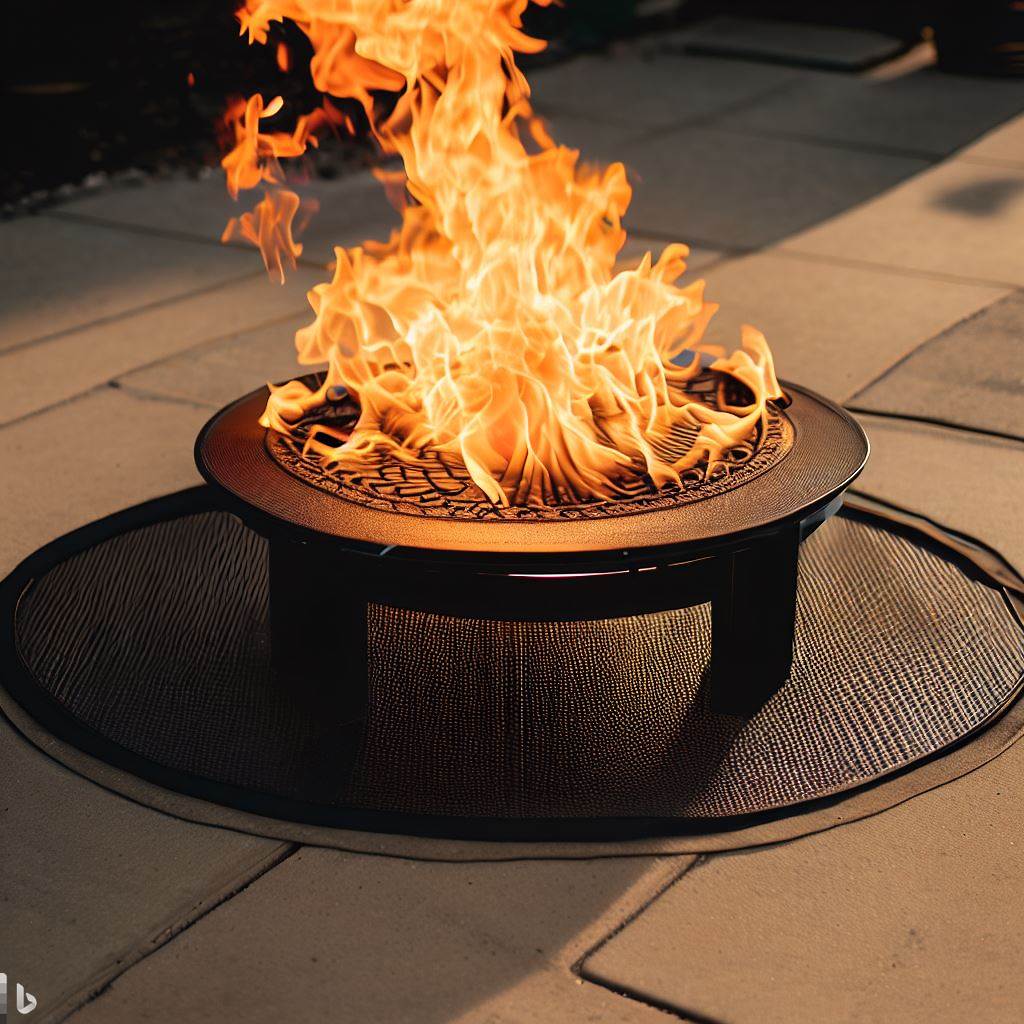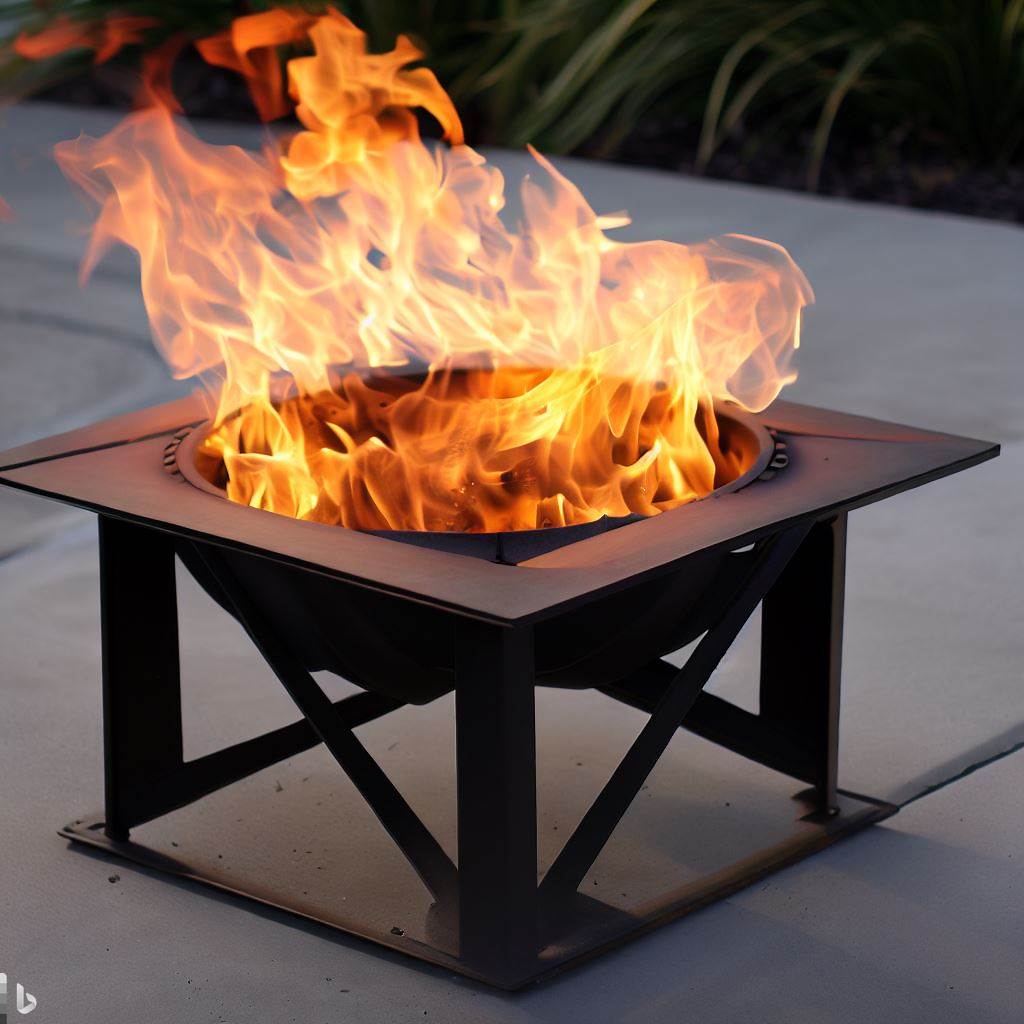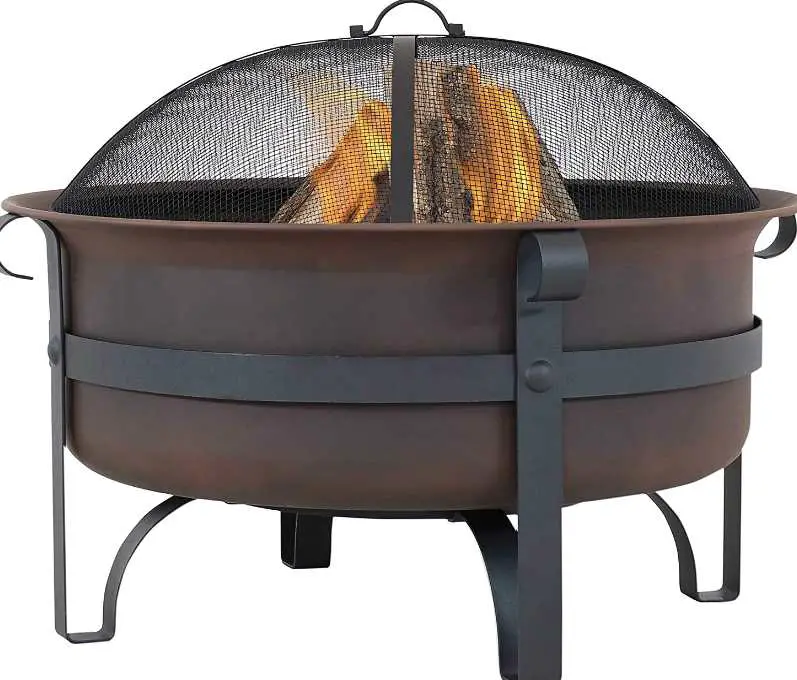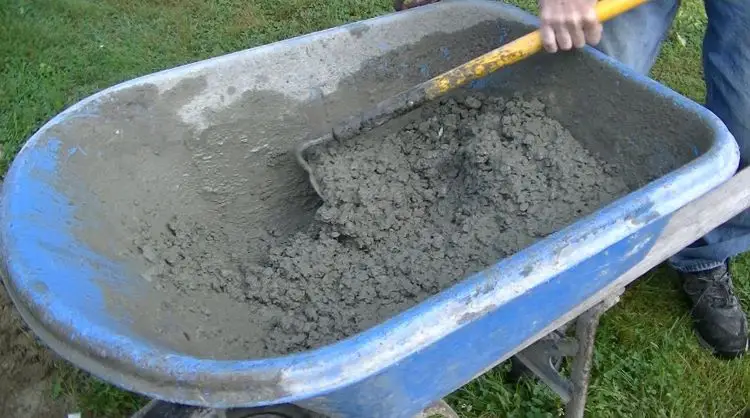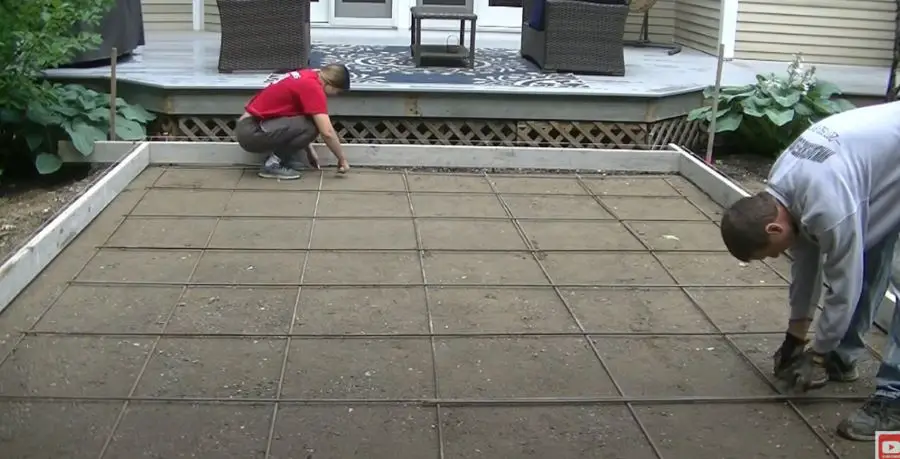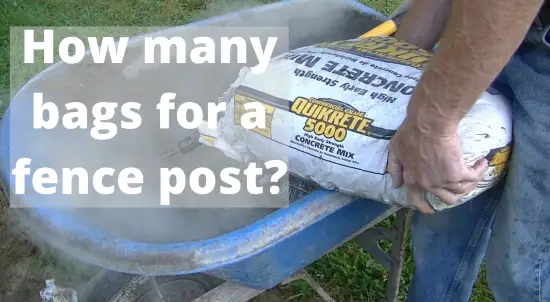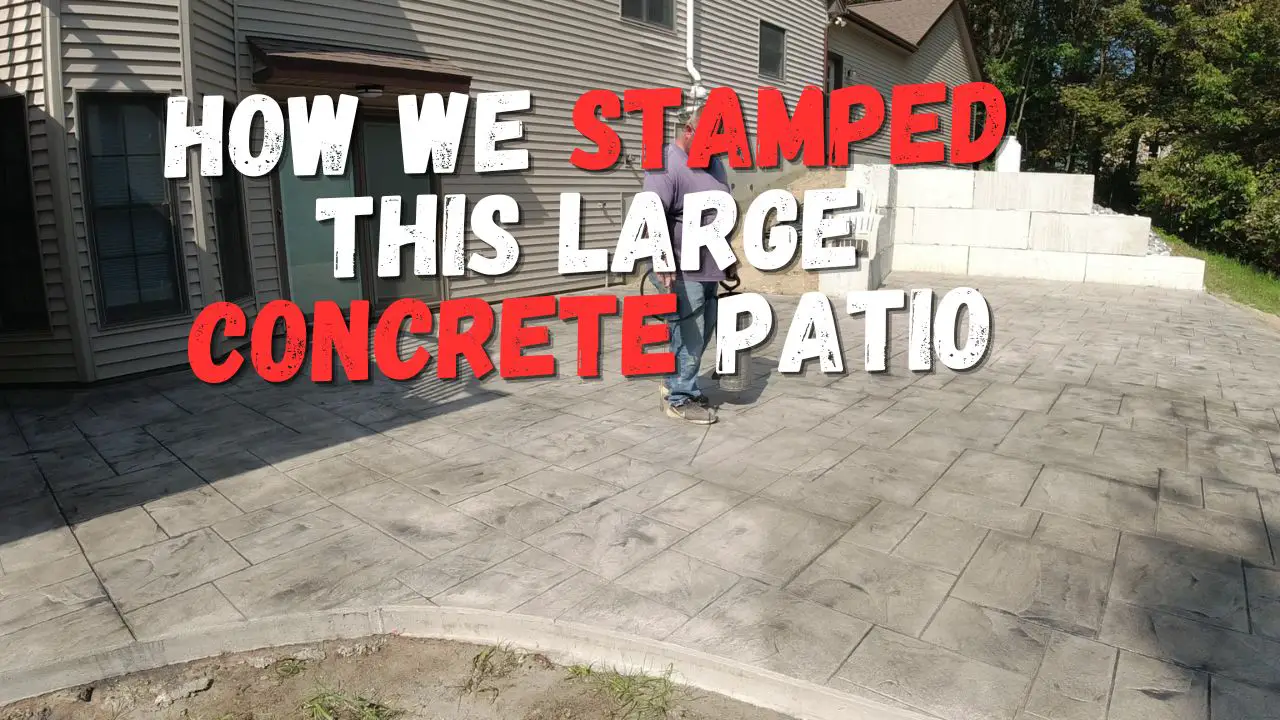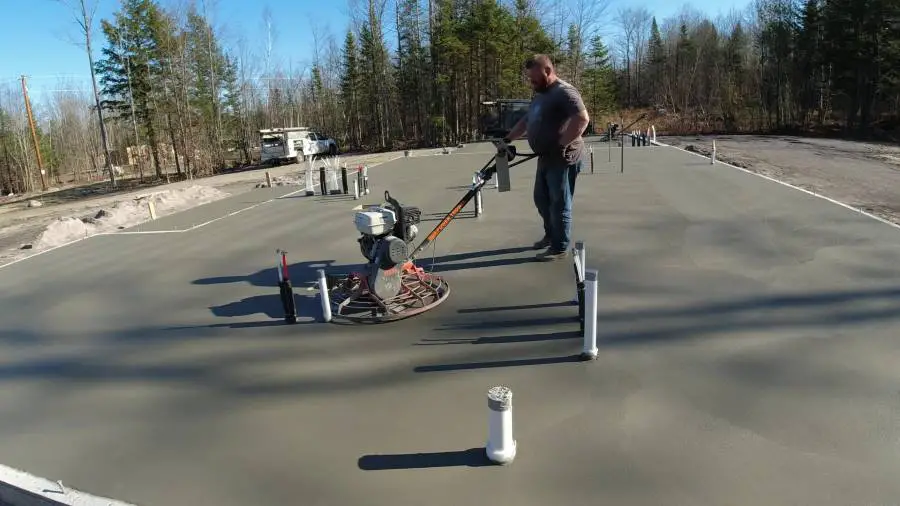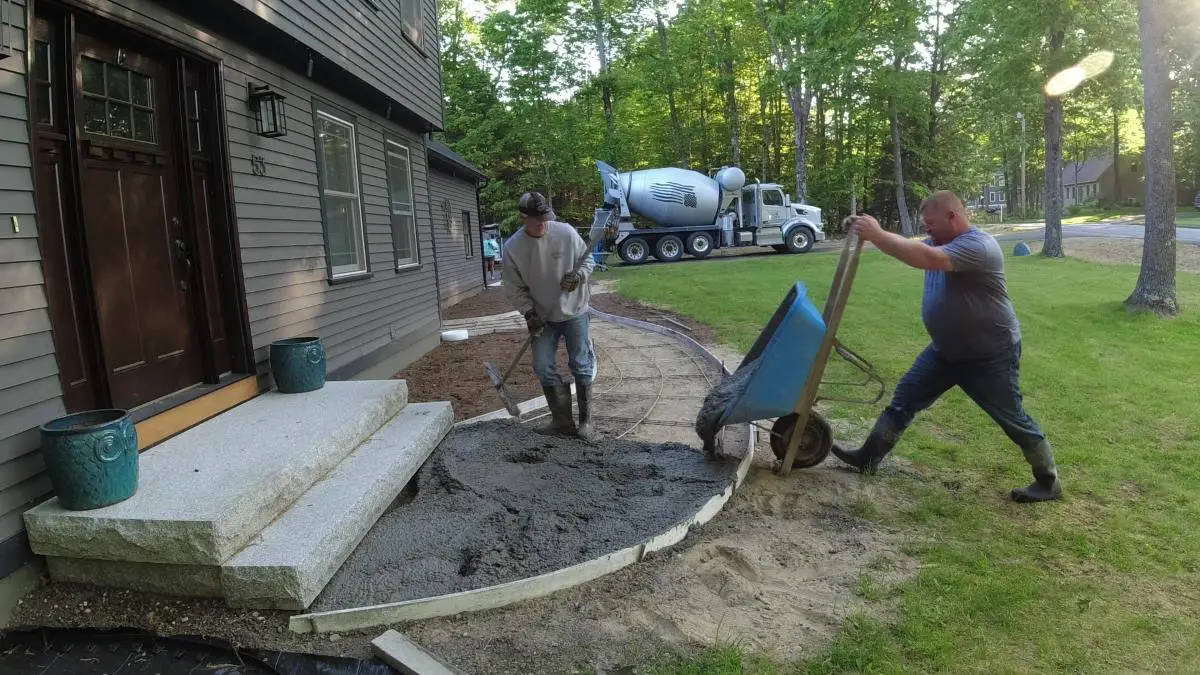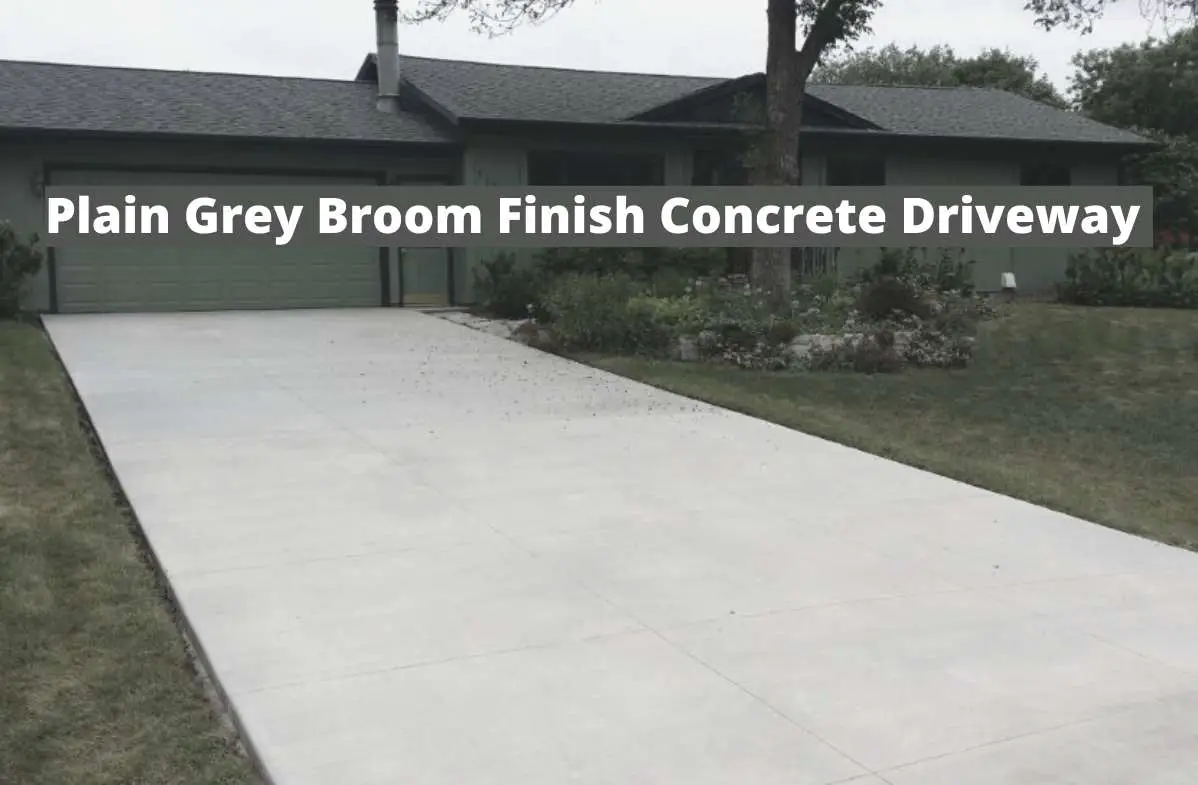Will a fire pit damage a concrete patio
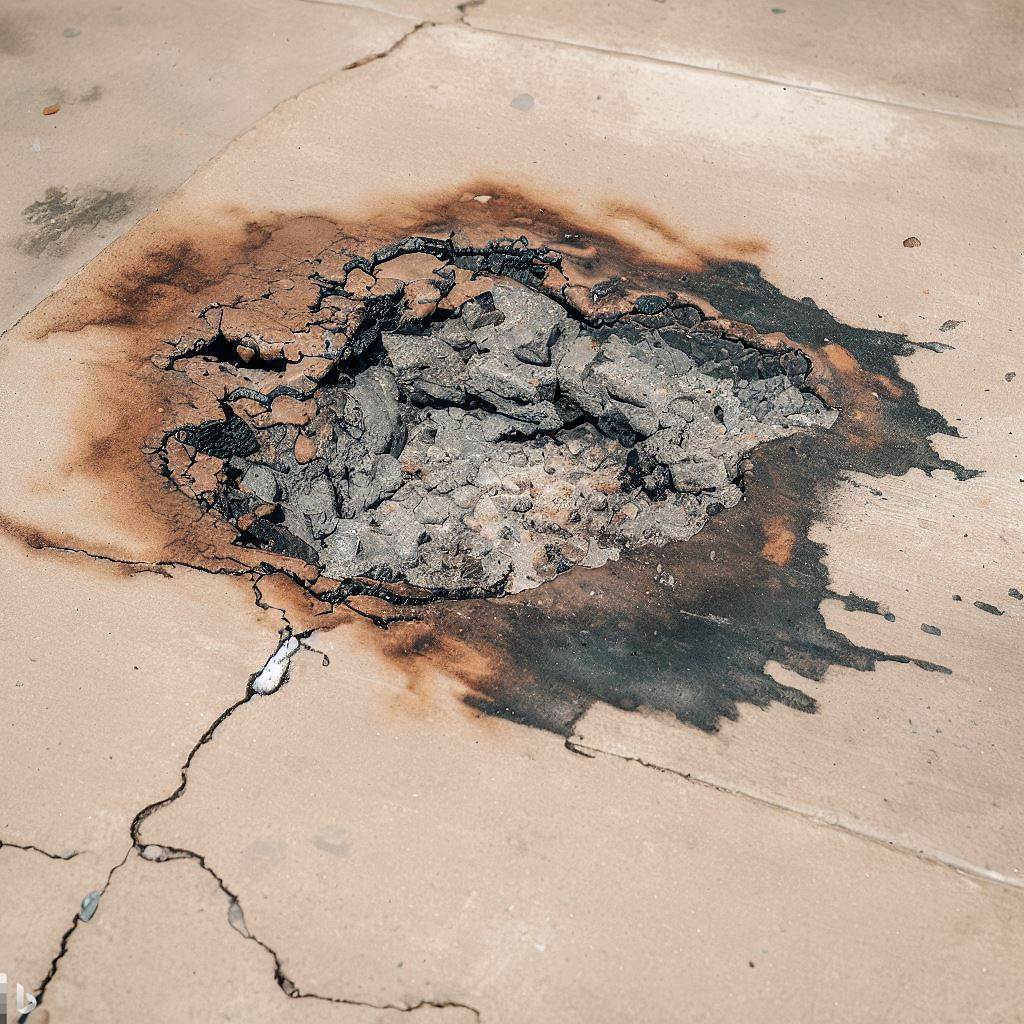
Yes, using a fire pit on a concrete patio can potentially damage the concrete over time.
Prolonged exposure to the high heat from a fire pit can cause thermal shock and spalling in the concrete, where its surface might flake, pop up, or peel off, particularly if there's moisture in the concrete that turns to steam.
If you're a homeowner, there's a good chance you've considered adding a fire pit to your backyard landscape.
Fire pits not only provide a cozy, warm spot for outdoor socializing, but also add an aesthetic appeal to your patio.
However, an important question may have crossed your mind - "Will a fire pit damage my concrete patio?"
In this comprehensive guide, I aim to thoroughly answer your questions and provide valuable insights on how to install a fire pit without causing harm to your concrete patio.
how does a fire pit damage concrete?
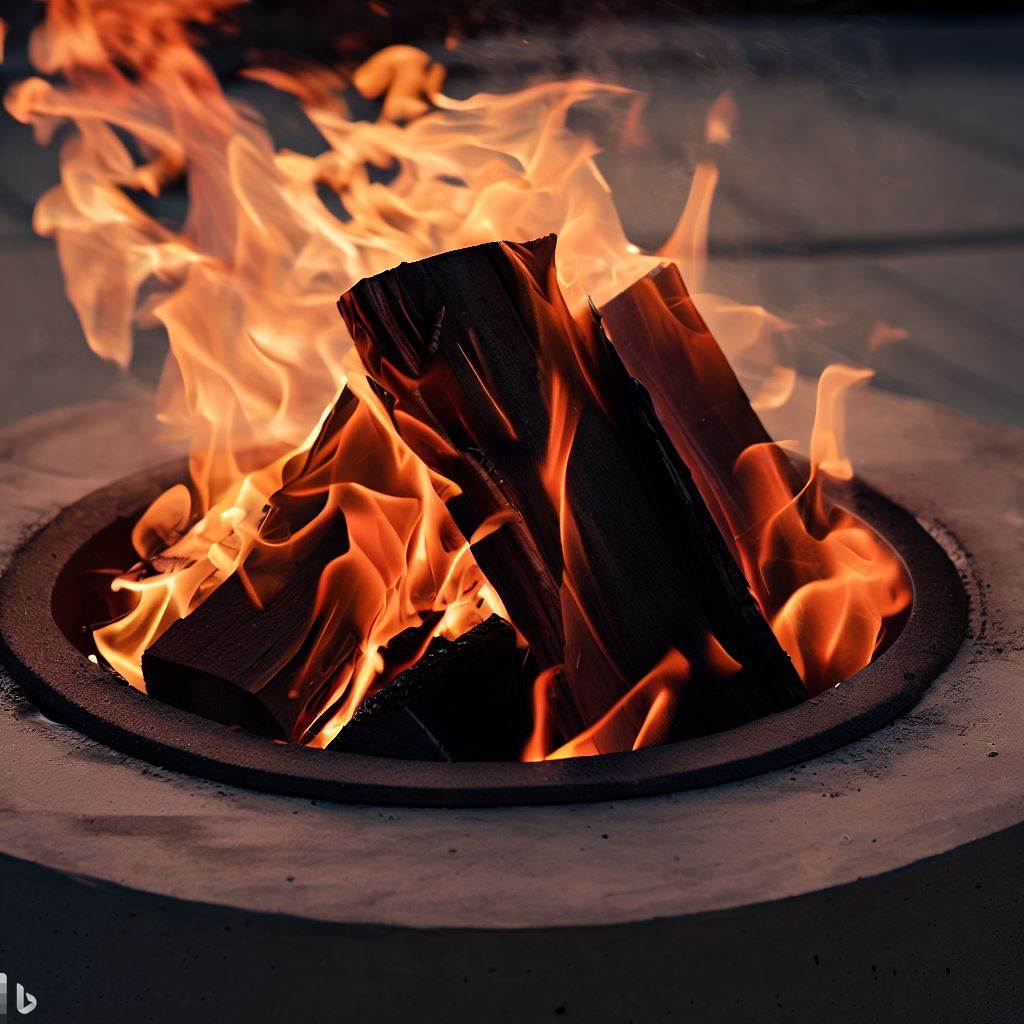
The heat from a fire pit can damage concrete in several ways:
- Thermal Shock: Concrete, like many materials, expands when heated and contracts when cooled. The high temperatures generated by a fire pit can cause the concrete to expand. When the fire is extinguished and the concrete rapidly cools down, it contracts. This cycle of rapid heating and cooling can lead to thermal shock, which can cause cracking and weakening of the concrete over time.
- Spalling: Spalling is another significant issue that can occur when concrete is exposed to high heat. This phenomenon refers to the flaking or popping off of the concrete's surface. When there's moisture within the concrete, intense heat can cause the water to turn into steam. As steam occupies a larger volume than liquid water, this creates internal pressure, which may cause small explosions inside the concrete, leading to spalling.
- Degradation of Sealant: If the concrete patio is sealed, the sealant can degrade under high temperatures. Over time, this could lead to peeling, discoloration, or a cloudy appearance on the concrete surface.
- Structural Damage: Repeated exposure to high heat can eventually reduce the overall strength of the concrete, making it more susceptible to cracking and other forms of damage.
how hot do fire pits get?
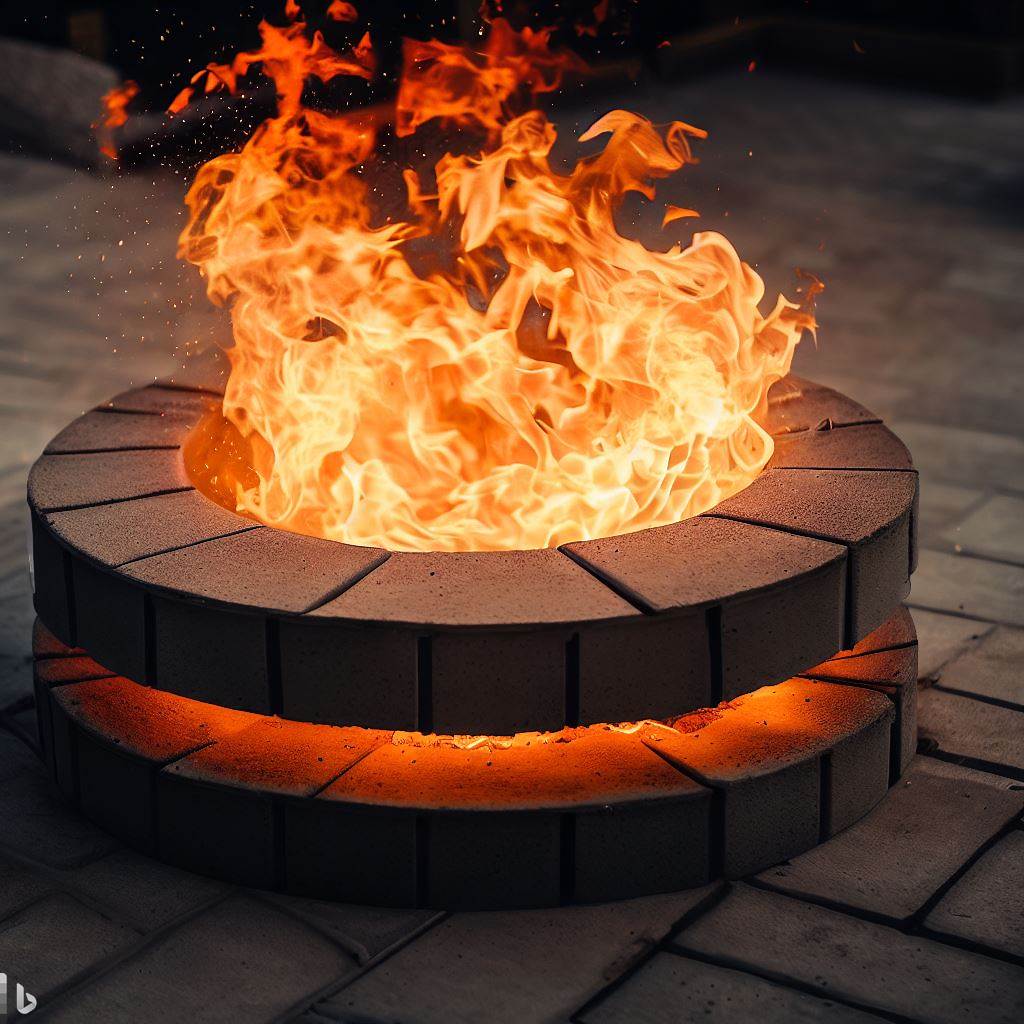
Fire pits, depending on the fuel they use, can reach different temperatures.
- Wood-Burning Fire Pits: These are among the most common types of fire pits and can reach temperatures up to 1,200 degrees Fahrenheit. However, the heat at the base where it contacts the patio is usually less than this due to the insulating effect of the ash bed.
- Propane Fire Pits: Propane fire pit, a popular choice for their convenience, can achieve temperatures around 1,000 to 1,200 degrees Fahrenheit.
- Natural Gas Fire Pits: Similar to propane, natural gas fire pits usually reach temperatures in the range of 1,000 to 1,200 degrees Fahrenheit.
- Gel Fuel Fire Pits: These fire pits produce the least heat, generally reaching temperatures around 800 to 900 degrees Fahrenheit.
Now, as for concrete, it has a heat tolerance of up to around 1,500 degrees Fahrenheit. However, this does not mean that it remains unaffected until it reaches this temperature.
The risk isn't necessarily about reaching a specific temperature but rather the frequency and duration of exposure to extreme heat.
Frequent and prolonged exposure to high heat—even if it's not reaching the concrete's maximum heat tolerance—can cause issues like thermal shock and spalling, especially if the concrete is sealed.
Sealants may have a lower heat tolerance, and trapped moisture within the concrete can turn into steam under high heat, contributing to spalling.
Therefore, while the heat from the fire pit might not exceed the maximum heat tolerance of the concrete, it can still potentially cause damage over time if the right precautions are not taken.
What can you put under a fire pit to protect the concrete?
So, how can you enjoy a warm, crackling fire pit without risking your concrete patio?
- Use a Fire Pit Pad or Mat: A good quality fire pit mat or pad is designed to withstand high temperatures and insulate the heat from the surface underneath. They come in various materials and sizes. Choose one that fits the size of your fire pit and place it underneath whenever you light a fire.
- Install a Fire Pit with a Protective Layer: Many fire pits come with a built-in heat shield or protective layer at the bottom. If you're buying a new fire pit, consider one with this feature.
- Use a Fire-Resistant Barrier: Another option is to install a fire-resistant barrier like fire bricks, pavers, or a steel or copper ring between the fire pit and your concrete patio. These materials can handle extreme heat and will distribute it evenly, reducing the risk of concentrated heat damaging your concrete.
will a portable fire pit cause damage to concrete patios?
A portable fire pit is a movable structure designed to contain and control outdoor fires. They come in various designs and sizes and can use different types of fuel, including wood, propane, and natural gas.
The key feature of these fire pits is their mobility. You can easily move them around your yard, take them on camping trips, or store them away when not in use.
Portable fire pits are generally safe to use on a concrete patio, but, like all fire pits, they have the potential to cause damage to the concrete due to the high heat they produce and the heat transfer from the bottom of the fire pit to the concrete.
To safely use a portable outdoor fire pit on a concrete patio, consider the following precautions:
- Fire Pit Pad/Fire Mat: Place a fire pit pad or heat retardant mat underneath your portable fire pit.
- Heat Shield: If your portable fire pit comes with a heat shield, make sure to use it. If it doesn't, consider purchasing one separately.
Remember, safety should be your top priority when using a fire pit, portable or not. Always keep a fire extinguisher or water source nearby, and never leave the fire pit unattended while it's lit.
will a fire pit damage concrete pavers?
Yes, similar to an unshielded concrete patio, concrete pavers can also potentially be damaged by a fire pit.
The high heat from a fire pit can cause issues such as thermal shock and spalling in concrete pavers.
Thermal shock happens when the concrete rapidly heats and cools, causing it to expand and contract, which can lead to cracking over time.
Spalling occurs when moisture trapped within the concrete turns into steam under high heat, causing the heat-sensitive surface of the concrete to flake, pop up, or peel off.
It's important to remember that even though concrete pavers are individual units and can be replaced more easily than a solid concrete slab, they're still susceptible to the same type of heat damage.
So, it's advisable to take the same precautions, such as using a fire pit pad or mat, installing a fire pit with a protective layer, or using a fire-resistant barrier.
what are fire pit screens and do i need one?
Fire pit screens, also known as spark screens, are essential safety accessories for any fire pit. They serve two primary functions:
- Contain Sparks and Embers: As the name suggests, fire pit screens are designed to contain sparks, embers, and flying ash that could potentially ignite nearby flammable materials, such as outdoor furniture, plants, or even your house. By containing these elements, the screen reduces the risk of unintentional fires.
- Protection from Wind: Screens also act as a windbreak, preventing the wind from stoking the fire too aggressively, which could lead to uncontrollable flames or the spread of sparks.
A Fire pit spark screen is typically made of heat-resistant metal mesh, such as stainless steel or coated carbon steel.
They come in a variety of shapes and sizes to fit different types of fire pits, including round, square, and rectangle designs.
While fire pit screens play a critical role in promoting fire safety, they do not significantly help in protecting your concrete patio or pavers from potential heat damage caused by the fire pit.
Their design is to contain sparks and embers, not to reduce the heat output of the fire pit. Therefore, other measures, such as using thermal barriers like heat-proof mats or heat shields, should be taken to protect your patio or pavers.
Remember, even with a fire pit screen in place, you should never leave a lit fire pit unattended and always have a fire extinguisher or a reliable water source nearby.
Here are some of the top-rated fire pits you can use on concrete
Here are some of the best-selling fire pits that you can use on a concrete patio:
- Ohio Flame Steel Wood-Burning Fire Bowl: This fire bowl is made of high-quality steel and has a durable finish that can withstand harsh weather conditions. Here's a similar one on Amazon.
- Solo Stove Bonfire 2.0 with Stand Fire Pit: This fire pit is made of stainless steel and has a unique design that allows for efficient burning with minimal smoke.
- TIKI Portable Metal Fire Pit: This portable fire pit is perfect for small patios and outdoor spaces.
- BioLite Smokeless Wood and Charcoal Fire Pit: This fire pit uses advanced technology to create a smokeless flame that burns wood and charcoal efficiently. It is priced at $249
- Solo Stove Mesa Tabletop Fire Pit with Stand: This tabletop fire pit is perfect for small patios and outdoor spaces. It is made of stainless steel and has a unique design that allows for efficient burning with minimal smoke.
- Teamson Concrete Wood Burning Fire Pit: This fire pit is made of high-quality concrete and has a unique design that adds a touch of elegance to any outdoor space.
in conclusion:
Understanding the interaction between a fire pit and a concrete patio is crucial for homeowners and DIY enthusiasts looking to enhance their outdoor spaces.
While a fire pit can bring warmth, ambiance, and functionality to your patio, it can also potentially damage the concrete if precautions aren't taken.
The heat from a fire pit, especially if used frequently and for long durations, can lead to thermal shock and spalling in concrete.
Some of my most popular pages:
